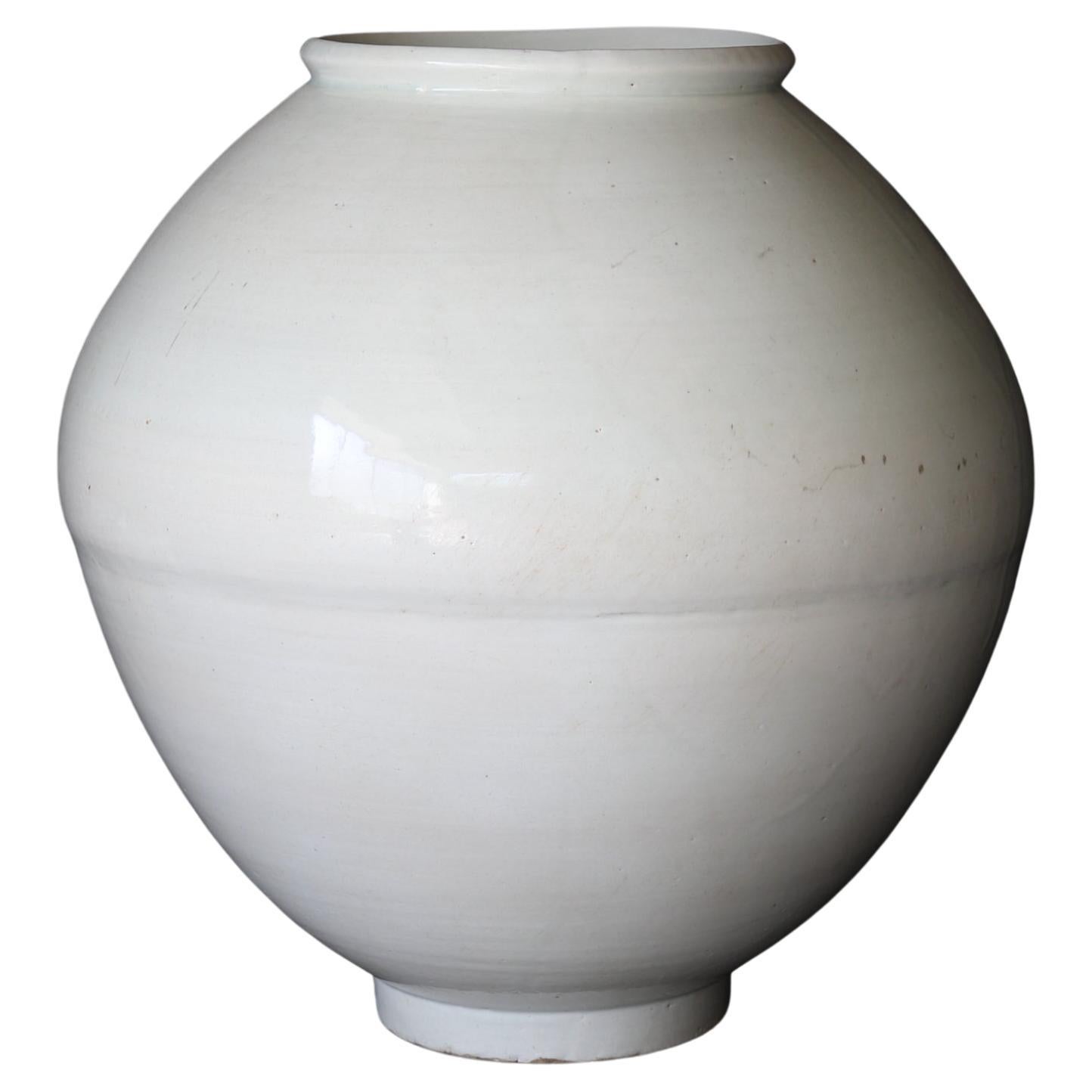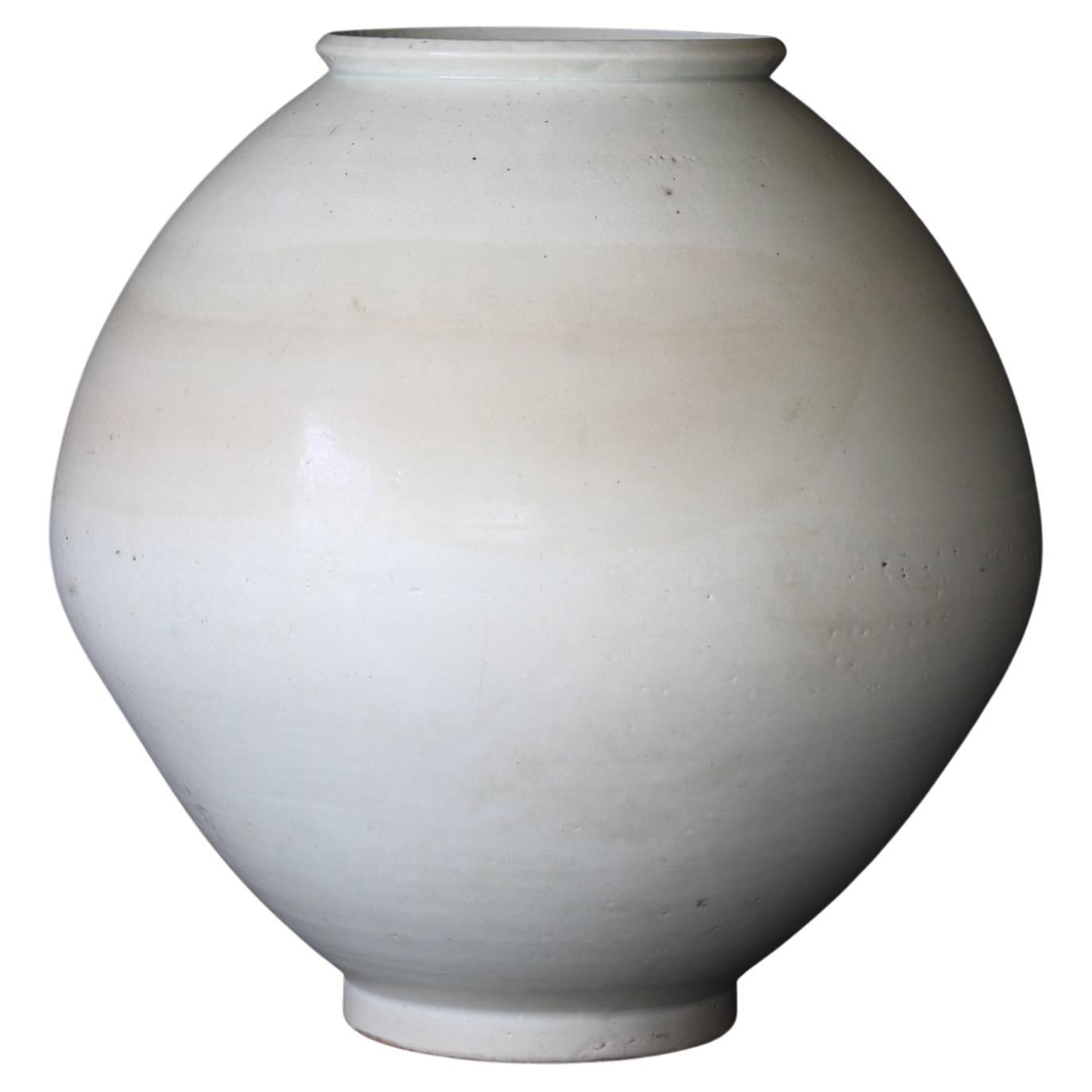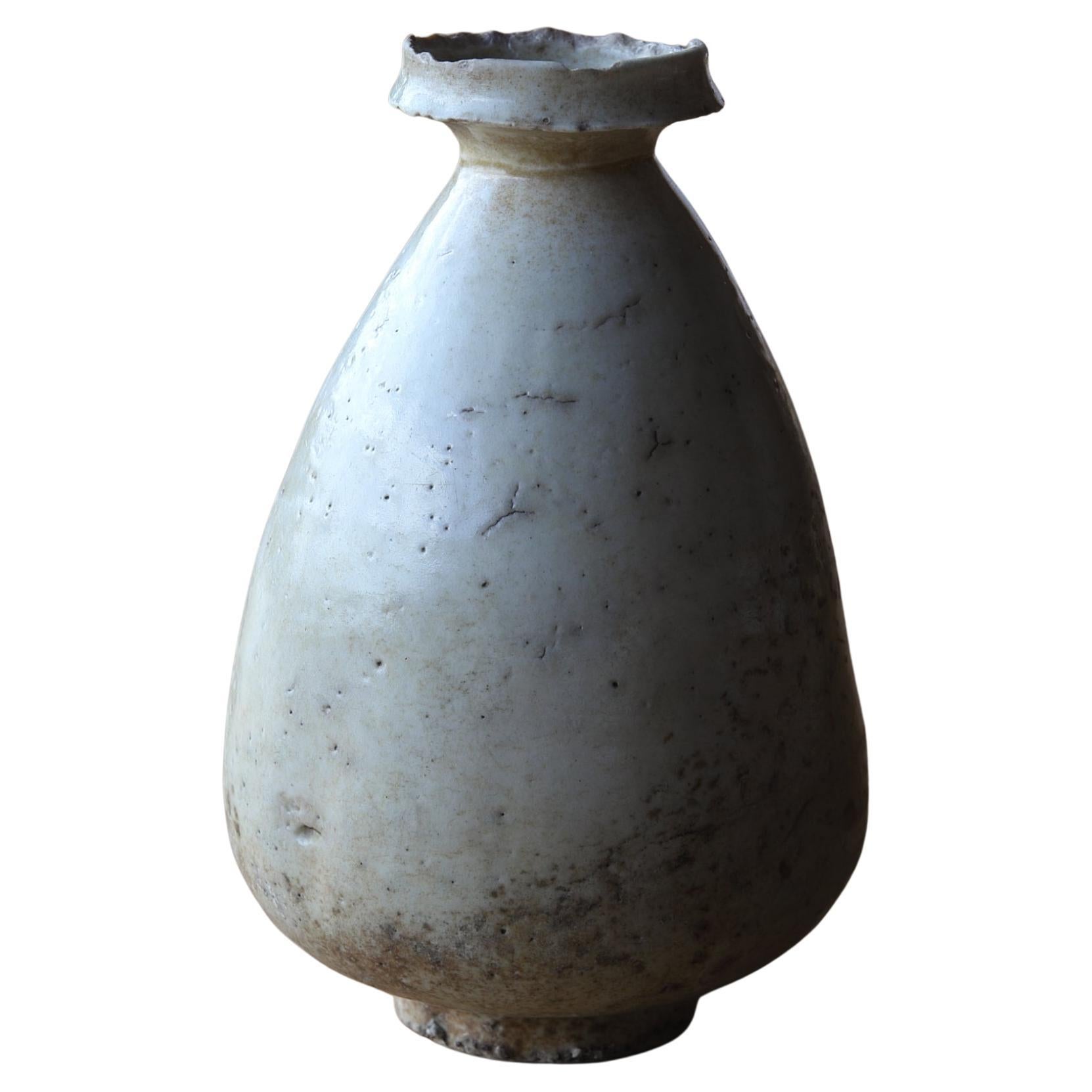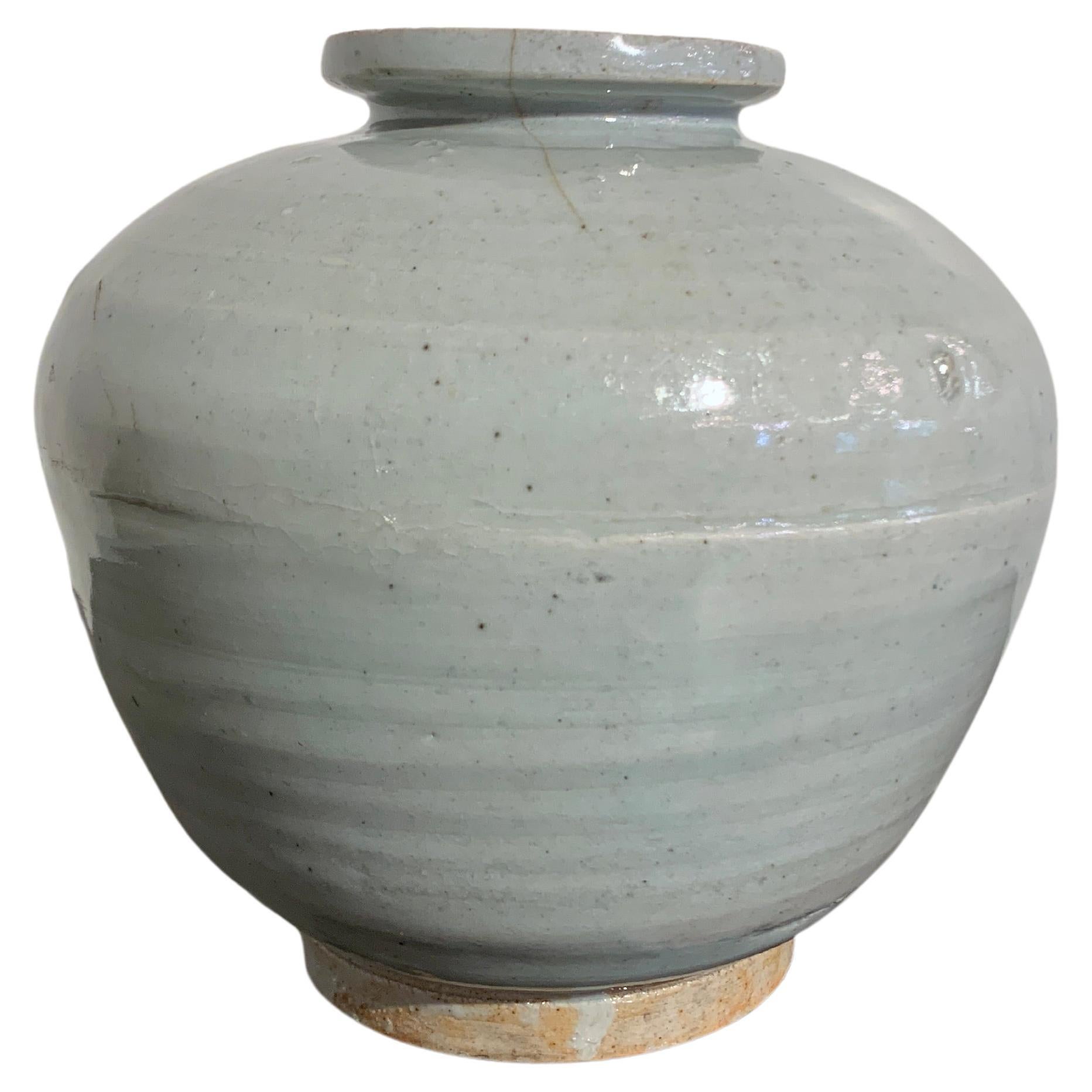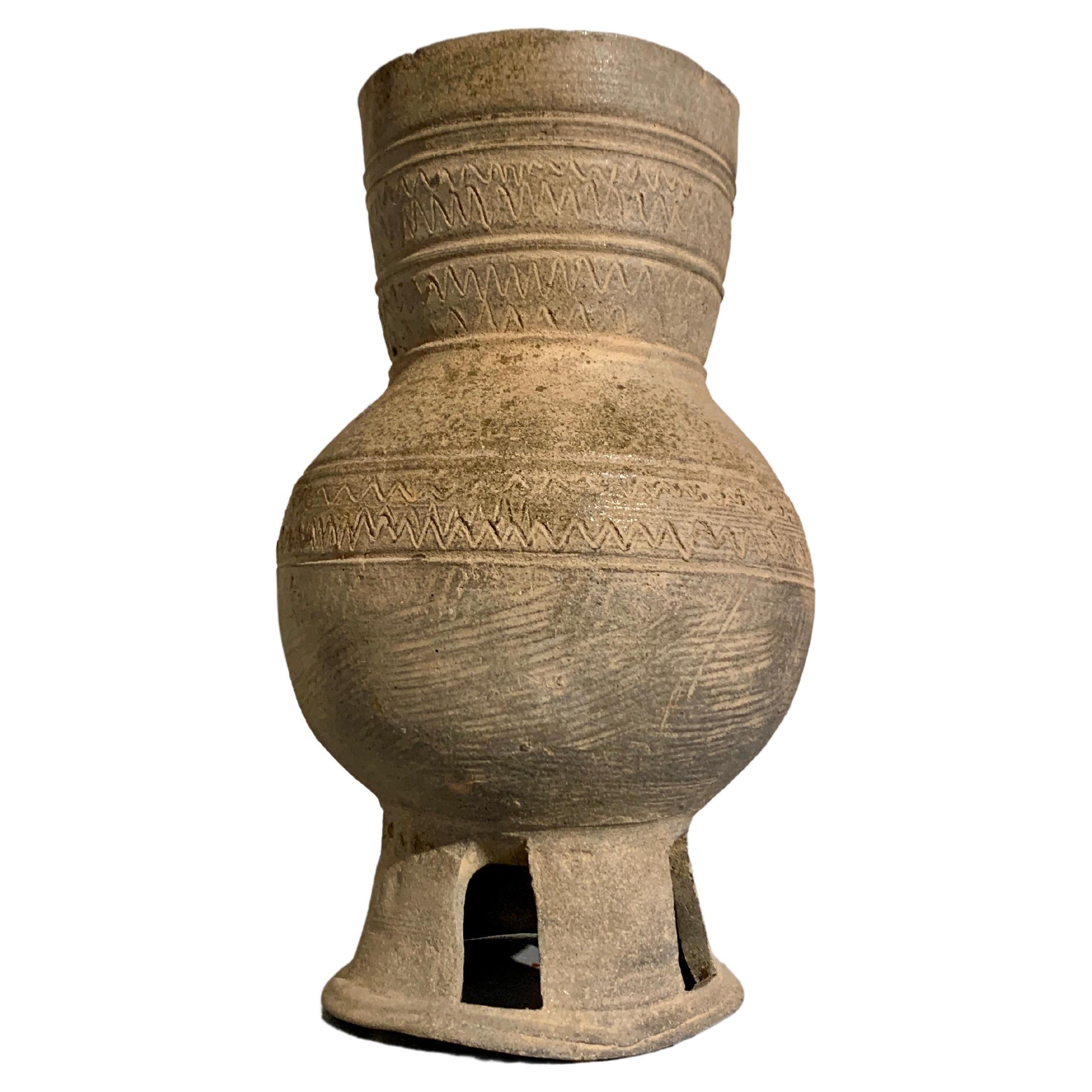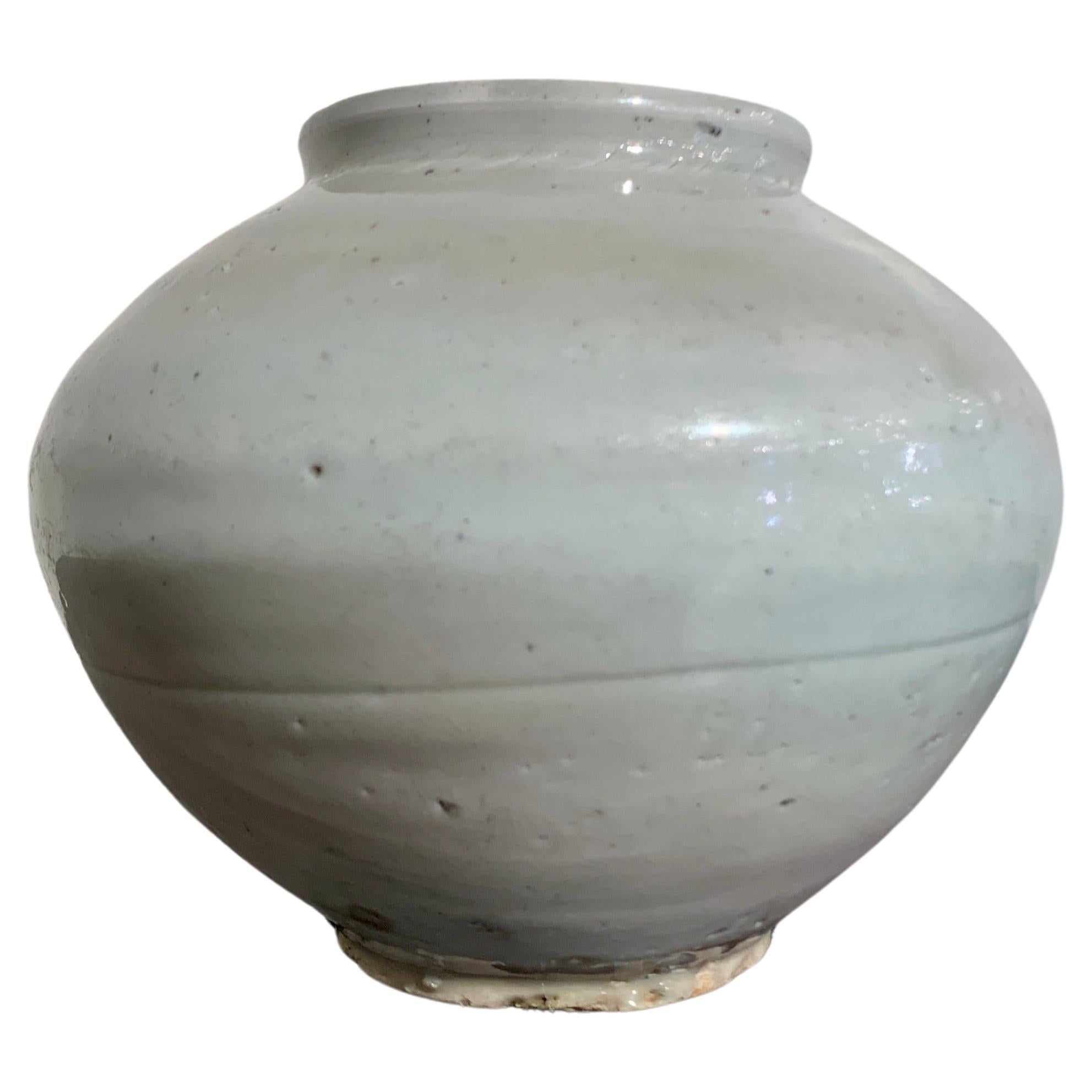Items Similar to Moon Jar / Korean Antique vase / Joseon Dynasty / 18th Century
Want more images or videos?
Request additional images or videos from the seller
1 of 21
Moon Jar / Korean Antique vase / Joseon Dynasty / 18th Century
About the Item
It's a wonderful moon jar. It is a rare size that is suitable for the alcove of a Japanese tea room. It is shaped at once without connecting the upper part and the lower part. Time is engraved on the surface of the white porcelain, and it has a pleasant appearance of naturalism typical of the Joseon dynasty (1392–1910).
- Dimensions:Height: 13 in (33 cm)Width: 10.63 in (27 cm)Depth: 10.63 in (27 cm)
- Materials and Techniques:
- Place of Origin:
- Period:
- Date of Manufacture:1392-1910
- Condition:
- Seller Location:Kyoto-shi, JP
- Reference Number:1stDibs: LU7673232679192
About the Seller
No Reviews Yet
Vetted Seller
These experienced sellers undergo a comprehensive evaluation by our team of in-house experts.
Established in 2012
1stDibs seller since 2022
- ShippingRetrieving quote...Ships From: Kyoto-shi, Japan
- Return PolicyA return for this item may be initiated within 2 days of delivery.
More From This SellerView All
- Moon Jar 'Dalhanari', Lot3 / 17th Century / Korean Antiques / Joseon DynastyLocated in Kyoto-shi, KyotoThis is a white porcelain jar from the mid-Joseon period, also known as a "Talhunari" or "moon jar". During the Joseon Dynasty, which was strongly influenced by Confucianism, the purity of white porcelain was particularly prized in its artistic expression due to its Confucian sensitivity. The defining characteristic of white porcelain during this period was its pure white color, but there were many subtle variations in the white hues, with some being classified as milky white, snowy white, ashen white, and bluish white. The term "Talhunari" means "moon jar" in Korean, and it refers to the large, round shape of the jar, resembling a full moon. It was named by Kim Whanki, a representative abstract painter of Korea. The soft, curving lines and sturdy body that seems to embrace the full moon give the jar both power and tranquility. This type of jar was produced in large quantities during the 17th century. The white of the moon jar is not the pure white of early Joseon porcelain...Category
Antique 17th Century Korean Ceramics
MaterialsCeramic, Porcelain
- Moon Jar 'Dalhanari' - Lot2 / 17th Century / Korean Antiques / Joseon DynastyLocated in Kyoto-shi, KyotoThis is a white porcelain jar from the mid-Joseon period, also known as a "Talhunari" or "moon jar". During the Joseon Dynasty, which was strongly influenced by Confucianism, the purity of white porcelain was particularly prized in its artistic expression due to its Confucian sensitivity. The defining characteristic of white porcelain during this period was its pure white color, but there were many subtle variations in the white hues, with some being classified as milky white, snowy white, ashen white, and bluish white. The term "Talhunari" means "moon jar" in Korean, and it refers to the large, round shape of the jar, resembling a full moon. It was named by Kim Whanki, a representative abstract painter of Korea. The soft, curving lines and sturdy body that seems to embrace the full moon give the jar both power and tranquility. This type of jar was produced in large quantities during the 17th century. The white of the moon jar is not the pure white of early Joseon porcelain...Category
Antique 17th Century Korean Antiquities
MaterialsCeramic, Porcelain
- White Porcelain Vase / 17th Century / Korean Antiques / Joseon DynastyLocated in Kyoto-shi, KyotoThis product is a white porcelain bottle from the Joseon Dynasty. People in those days used bottles like this to make soap from waste oil. With use, the porcelain frayed and curle...Category
Antique 17th Century Antiquities
MaterialsCeramic, Porcelain
- White Porcelain Incense Burner / Korean Antique / Joseon Dynasty/1392 - 1897 CELocated in Kyoto-shi, KyotoThis incense burner presents the characteristics of a typical Yi Dynasty Joseon Dynasty incense burner with a body that rises smoothly from the base, openworked ears and a semi-circu...Category
Antique 17th Century Korean Antiquities
MaterialsCeramic
- Bottle Buncheong Ware / 15th Century / Korean Antiques / Joseon DynastyLocated in Kyoto-shi, KyotoPowder blue celadon ware is a type of porcelain made in Korea during the first half of the Joseon dynasty, mainly in the 15th century. It was made by applying a fine white slip over iron-rich clay, then covering it with a transparent glaze and firing it. It was mainly used for daily utensils such as bowls and bottles. Joseon ceramics...Category
Antique 15th Century and Earlier Korean Antiquities
MaterialsCeramic, Porcelain
- White Porcelain Moon Jar, Joseon Dynasty / 1392-1897Located in Kyoto-shi, KyotoThis is a white porcelain jar from the mid-Joseon period, also known as a "Talhunari" or "moon jar". During the Joseon Dynasty, which was strongly influenced by Confucianism, the purity of white porcelain was particularly prized in its artistic expression due to its Confucian sensitivity. The defining characteristic of white porcelain during this period was its pure white color, but there were many subtle variations in the white hues, with some being classified as milky white, snowy white, ashen white, and bluish white. The term "Talhunari" means "moon jar" in Korean, and it refers to the large, round shape of the jar, resembling a full moon. It was named by Kim Whanki, a representative abstract painter of Korea. The soft, curving lines and sturdy body that seems to embrace the full moon give the jar both power and tranquility. This type of jar was produced in large quantities during the 17th century. The white of the moon jar is not the pure white of early Joseon porcelain...Category
Antique 18th Century Korean Ceramics
MaterialsCeramic, Porcelain
You May Also Like
- Korean White Glazed Jar, Joseon Dynasty, 18th Century, KoreaLocated in Austin, TXA sublime Korean white glazed porcelain globular jar, Joseon Dynasty, 18th century, Korea. The squat jar is heavily potted, with a globular body, very short neck, and wide mouth r...Category
Antique 18th Century Korean Ceramics
MaterialsPorcelain
- Korean Silla Dynasty Footed Jar, circa 6th Century, KoreaLocated in Austin, TXA charming Korean high fired gray pottery stoneware footed vessel, Three Kingdoms Period, Silla Kingdom, circa 6th century. The vessel of traditiona...Category
Antique 15th Century and Earlier Korean Antiquities
MaterialsPottery, Stoneware
- Small Korean White Glazed Porcelain Moon Jar, Joseon Dynasty, 18th/19th CenturyLocated in Austin, TXA subtle and sublime small Korean white glazed porcelain moon jar, Joseon Dynasty, 18th/19th century, Korea. The small moon jar of typical form, ...Category
Antique Early 1800s Ceramics
MaterialsPorcelain
- Korean Ceramic Moon Jar with Dragon Joseon DynastyLocated in Atlanta, GAOn offer is a large Korean ceramic storage jar (hangari) with white glaze and iron red underglaze dragon design. The globular shaped jar derived its form from the Moon Jar of the ear...Category
Antique 18th Century Korean Archaistic Ceramics
MaterialsCeramic
- Antique Korean Porcelain Peony Jar Joseon DynastyLocated in Atlanta, GAA Korean white porcelain jar with underglaze blue painting of large peonies with leaves circa second half of 19th century, Joseon Dynasty. Considered associated with Punwon-ri kilns ...Category
Antique Late 19th Century Korean Other Ceramics
MaterialsPorcelain
- Antique Korean Porcelain Peony Jar Joseon DynastyLocated in Atlanta, GAA Korean white porcelain jar with underglaze blue painting of large peonies with leaves circa second half of 19th century, Joseon Dynasty. Considered associated with Punwon-ri kilns ...Category
Antique Late 19th Century Korean Other Ceramics
MaterialsPorcelain
Recently Viewed
View AllMore Ways To Browse
Antiques Vase
Antiques Antique Vases
Moon Antique
Antique Moon
Antique Dynasty
Dynasty Antique Furniture
18th Century Ceramic
Antique Korean
Antique Korea
Antique Korean Korea
Korean Antique
Korea Antique
Antique Korean Furniture
Dynasty Ceramic
Korean Antique Furniture
Japanese Tea Room
Japanese 18th Century Antique
Korean Japanese
